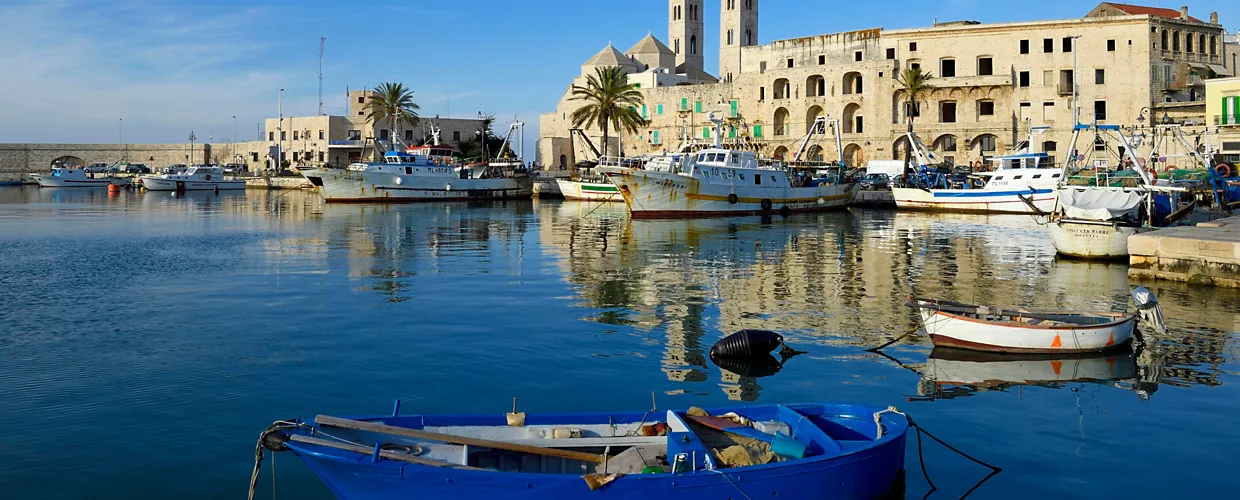This content was automatically translated. View the original text.


Overview
The origins of this active fishing port are lost in the mists of time. Molfetta, probably founded in Roman times, after the fall of the Roman Empire, was at the mercy of the Goths, Byzantines, Lombards and Normans, who had successive control of the city. Its entire history revolves around the port, to which merchants from the Maritime Republics, Greece, Dalmatia and much of the traffic from the Crusades to the Holy Land flowed. This was the reason for the progressive growth of the urban core. The old town, with its elliptical layout, extends along a small peninsula and is criss-crossed by numerous narrow streets lined with old buildings, such as the City Hall and the adjacent Hall of the Templars, dating back to the 12th century, or the 14th and 15th century palazzo Giovene. The Baroque cathedral is the city's main church and the adjoining bishop's palace houses the diocesan museum, which contains works of sacred art, as well as Neolithic artefacts from the Pulo di Molfetta, a large karstic depression located inland, a couple of kilometres from the city. The church also houses the splendid seminary library: in a room frescoed in the late 19th century, on valuable wooden shelves, there are more than 40,000 works, including an illuminated manuscript on parchment from the 16th century and the Red Book, which tells the history of the city from 1323 to 1507. Another remarkable church is the 19th-centurybasilica of Santa Maria dei Martiri, of Norman origin (12th century). A walk along the harbour, crowded with fishing boats and shipyards, gives a good idea of the city's seafaring vocation. Right on the port stands the Old Cathedral of San Corrado, the most imposing and significant Romanesque place of worship with its pyramidal domes.
70056 Molfetta BA, Italia